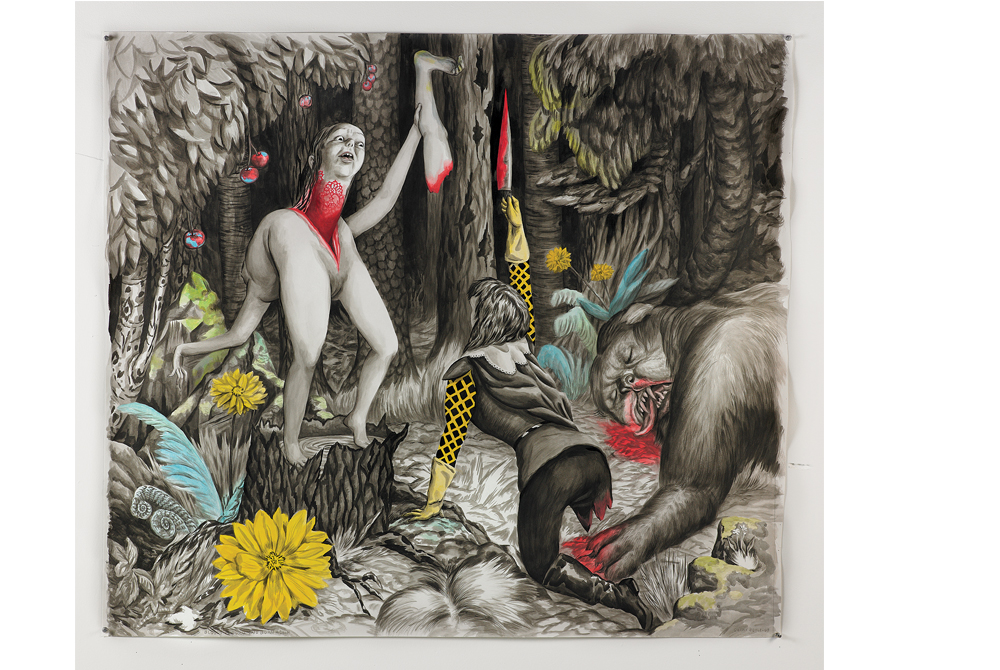This is an article from the Spring 2015 issue of Canadian Art.
An eerie and mesmerizing accumulation of colourful drawings and text-based works lined the walls of “The Illuminations Project” at Oakville Galleries, Centennial Square. The exhibition featured the work of Shary Boyle and Emily Vey Duke, two longtime collaborators. The viewer was transported by their transcendent drawings and stories, which touch upon themes such as the relationship between feelings, impulses, fantasies, shame and social control.
The structure of the exhibition was based on correspondence between the two artists, who sent drawings or texts to each other and kept others secret. They continued this process over 31 exchanges. “The Illuminations Project” followed a loose narrative featuring a female character named Bloodie, as well as Peg-Leg and his gang of Wild Boys. Together these characters journey through the strange lands that Boyle and Vey Duke envision.
In the texts, Vey Duke’s words are playful, strange, violent and abject. Many are narrative-driven, as in The Delicate Perversity of Obscene Excess (in which Bloodie gets bored with her mission and spends several months getting as fucked up as possible) (2005–14), where Vey Duke writes: “So Bloodie binges. She throws down her equipment.” Another example is The Return of Peg-Leg (2006–14): “Bloodie ducks low, covers herself with leaves and dirt. Her heart is beating like a big, booming drum. There’s more crackling racket and then animal-drinking sounds…She turns her head slowly. The animal is closer than she thought.”
Interspersed in the narrative are more lyrical pieces that sway between beautiful and grotesque, such as Wild Horses of Siren Lagoon (2006–14), In Winter, We Are Less Happy (2004–14) and The Bad Mother (2007–14), among others. These works, while playful and strange, almost transcend the surface narrative that has been sketched out, revealing a more profound reading of the human spirit.
Equally alarming and honest are Boyle’s drawings. Revelling in the appalling, the works are populated by nymph-like, lithe figures. Dancing, writhing, seeping blood and climbing, the characters act out fantastic situations of bad behaviour. The drawings are colourful, their palettes ranging from dark black, blazing pinks, reds and oranges to soft pastel greens, purples and blues, and are as haunting as the subject matter is fantastically disturbing. Familiar and invented mythologies emerge in works such as Wild Horses of Siren Lagoon (2006), where a pond pours forth from the mouth of a monster in which multiple figures copulate with horses. Other works, like The Fundamental Difference between Peg-Leg and Bloodie Is This (2004) and In Which the Blood Gets Hot (2005), contemplate female sexuality and social taboos as blood pours down Bloodie’s leg and, in the latter image, blooms like an angelic wing from her vagina. Others still recreate nightmarish visions where pastel figures crawl toward a conch shell in a fiery hell or form a large, orgiastic pile oozing into each other, as in All Retreat to the Cave in Permanence (2007) or Until That Day We Embrace Disease and Remember the Origin of Joy (2005). In its totality, the exhibition laid bare a world perceived through dreams where truth can also be revealed.









